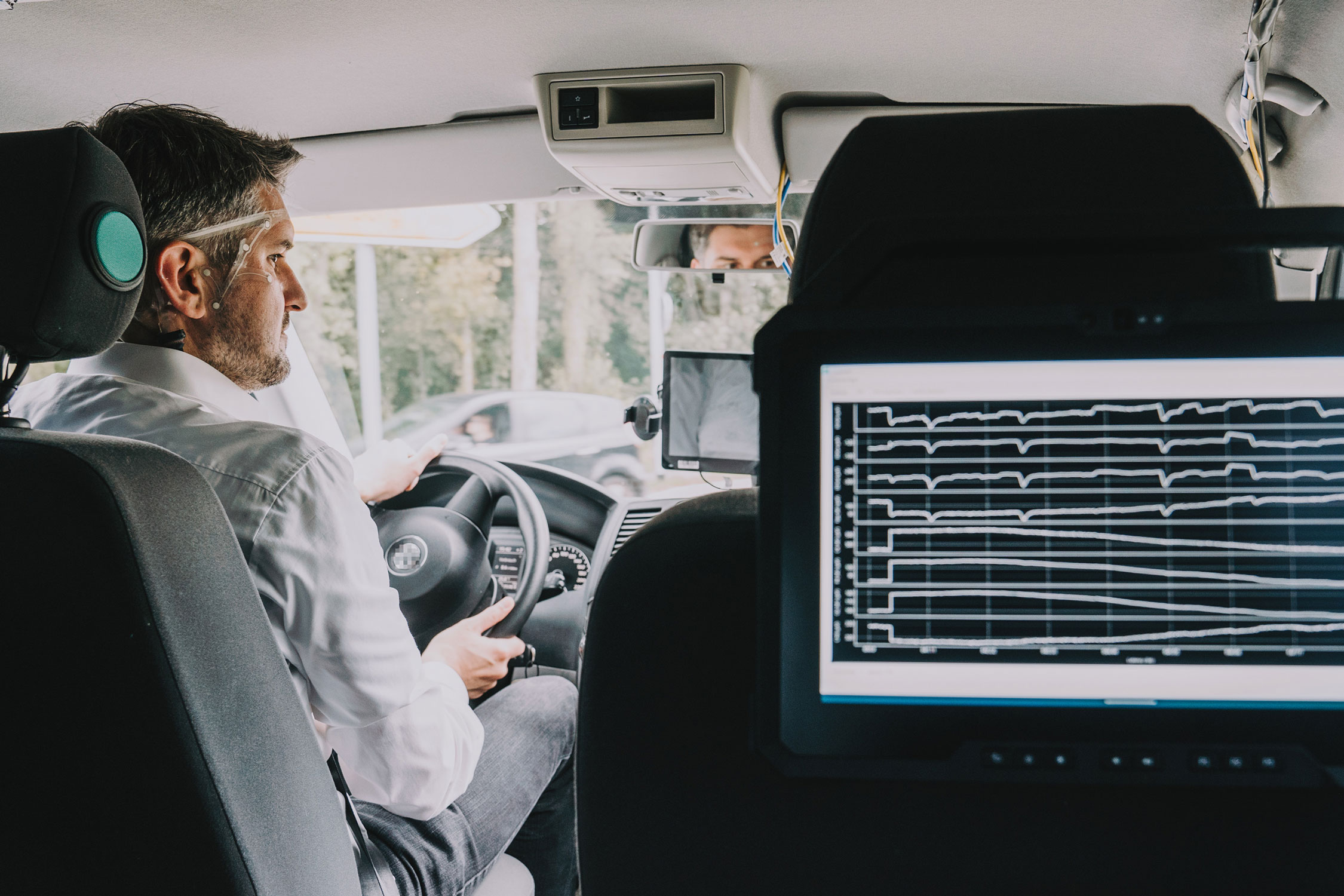
How attentive are drivers during monotonous car journeys? Researchers in the “MentalState” project are examining the change in level of attention during a monotonous activity, known as vigilance, by analysing brain activity and other biosignals. The objective is to make these results usable for the development of autonomous vehicles and advanced driver assistance systems (ADAS). In the study, vigilance is monitored by means of two scenarios in a driving simulator; one manual driving scenario and one autonomous driving scenario. Experiments are conducted to see whether the change in sustained attention, i.e., vigilance, differs between autonomous and manual driving and how this is related to drivers’ ability to react to dangerous situations while driving.
A central aspect of the study is the monitoring of brain activity through recording of electroencephalograms (EEG). To record the EEG, the researchers are working with an adapted design of the self-adhesive trEEGrid, customized for this use-case. The trEEGrid was developed as a prototype within the “SleepWell” project. The electrodes can be arranged flexibly, depending on the purpose. In addition, it is designed for self-use and delivers good signal quality with high wearing comfort. For the following analysis of the data, intelligent machine learning algorithms of the Oldenburg Branch are used.
In addition to EEG, the researchers also analyze other biosignals. An eye tracker records activity and movement of the eyes to detect signs of fatigue, such as pupil size or blink rate. In addition, heart rate variability is monitored as another parameter. From heart rate variability it is possible to deduce how heart rate adjusts to physical or mental demands. By means of questionnaires, participants indicate their subjective assessment of mental demands. Behavioral data, such as response speed and error rates, deliver further information about driving performance and level of attention.
 Fraunhofer Institute for Digital Media Technology IDMT
Fraunhofer Institute for Digital Media Technology IDMT
